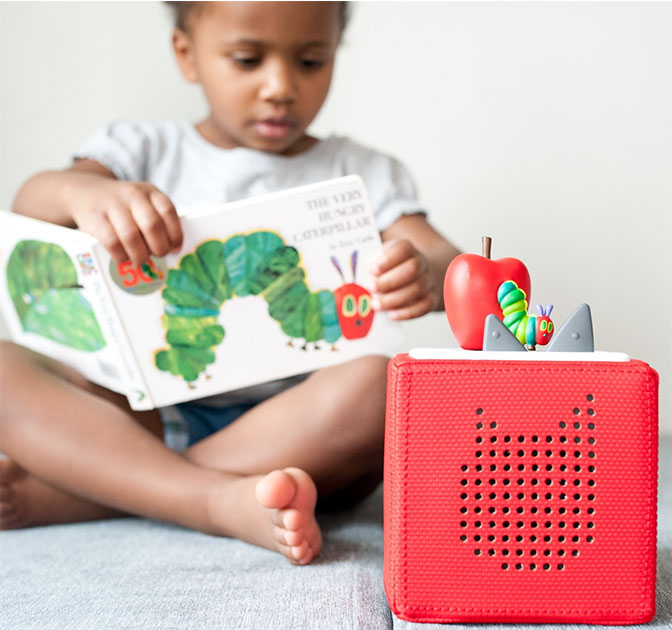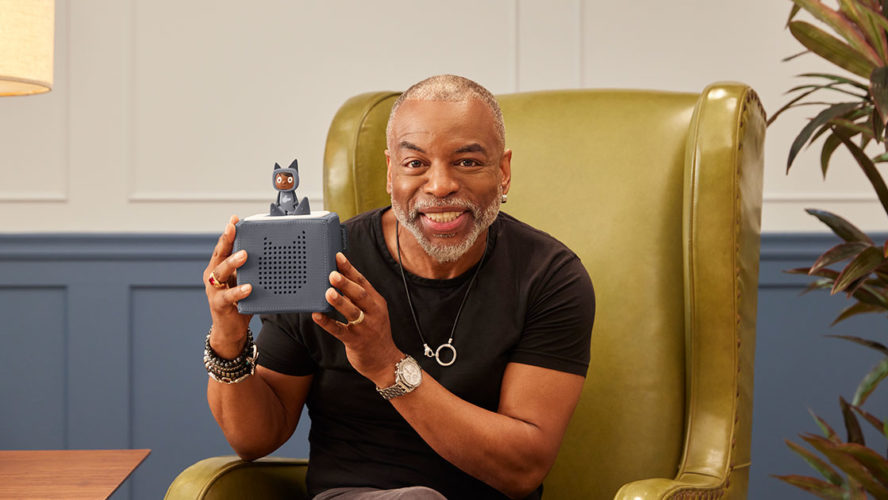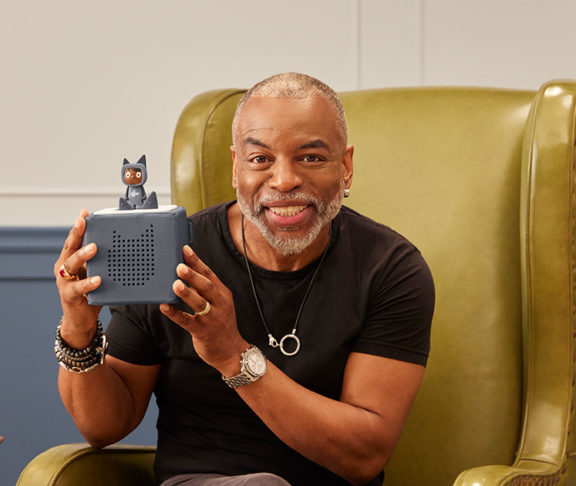A new tech tool is helping educators and parents boost kids’ literacy, and it doesn’t have a screen. Tonies, a digital audio platform for children, helps pre-readers and developing readers use their imaginations, allows them to develop reading skills, and encourages them to become storytellers.
A Toniebox is a 5-inch, squeezable speaker with buttons shaped like cat ears. When you place a Tonie — a 3-inch-tall magnetic figurine — on the top of it, the Toniebox starts telling a story or playing music related to that character.
Users can pinch an “ear” on the box to adjust the volume, and tap the sides to fast forward, rewind, or change chapters. When they’re ready for a new story or song, kids can switch out the Tonie on the top of the box.
“It creates autonomy and empowerment for young kids because they can manipulate the figures on their own and it puts them in control of the audio experience,” said Drew Vernon, marketing director for Tonies. “It’s tactile as well, so it helps their fine motor skills.”
Tonies launched in the United States in 2020, during the pandemic, at a time when too much screen time was becoming an even bigger problem for kids. This screen-free tool was a hit.
“When you remove the visual stimulus, you put a greater responsibility on the listener, because they have to imagine what’s taking place,” said Vernon, noting that listening trains students to focus, imagine, and be creative. “That helps them with problem-solving, and creative and critical thinking.”
Tonies for teachers
Tonieboxes can supplement the reading that teachers and parents are doing with kids, offering stories from beloved children’s authors like Dr. Seuss and Eric Carle. It keeps kids engaged and helps them develop early reading skills, like vocabulary and comprehension.

Tonieboxes can also provide mindfulness exercises and social-emotional learning opportunities. With Creative Tonies, users can create up to 90 minutes of custom content, such as parents of grandparents recording themselves reading stories or teachers recording lesson plans, like instructions for small group work.
Cera Alber, who has been an early childhood educator for 10 years, uses Creative Tonies to record family and teacher messages and stories for her students. “The look of joy and surprise when they hear a familiar voice is so uplifting. Creating and then sharing this with the class is so much fun.”
Alber is a program and outreach director at Green Trees Early Learning Center Inc. in rural Pennsylvania. The center has purchased Tonieboxes for each class. She says the kids love the independence they get when using the device.
“In our listening and quiet spaces, children have gravitated to a calm Tonie in self-guided meditation and soothing stories,” she said in a testimonial. “Being able to use the Toniebox has supported these children in social-emotional growth and self-regulation while having fun.”
Alber is a member of Tonies for Teachers, a program that encourages preschool and grade school teachers, librarians, and children’s museums to use Toniesboxes. The program gives teachers and other educators a 20% discount on Tonies products.
Teachers in the program feel supported, too. For example, there’s a Facebook group where the community comes together to discuss content and how they use Tonies in their classrooms.
Wonder of storytelling
Tonies are sharing the wonder of storytelling in 10,000 U.S. classrooms, as well as libraries.
There are more than 700 Tonies representing kids’ favorites like Disney, Sesame Street, Peppa Pig, Cocomelon, National Geographic, and more. Content is available in several languages, including English, Spanish, German, and French. Literacy advocate LeVar Burton, known for his work on “Reading Rainbow,” joined Tonies as a spokesperson.
While the target audience is children ages 2 to 5, Tonies have applications for kids through age 9. It’s a great tool for children with special needs, too, since it’s tactile and creates a sense of control.
For more information, please email [email protected]


